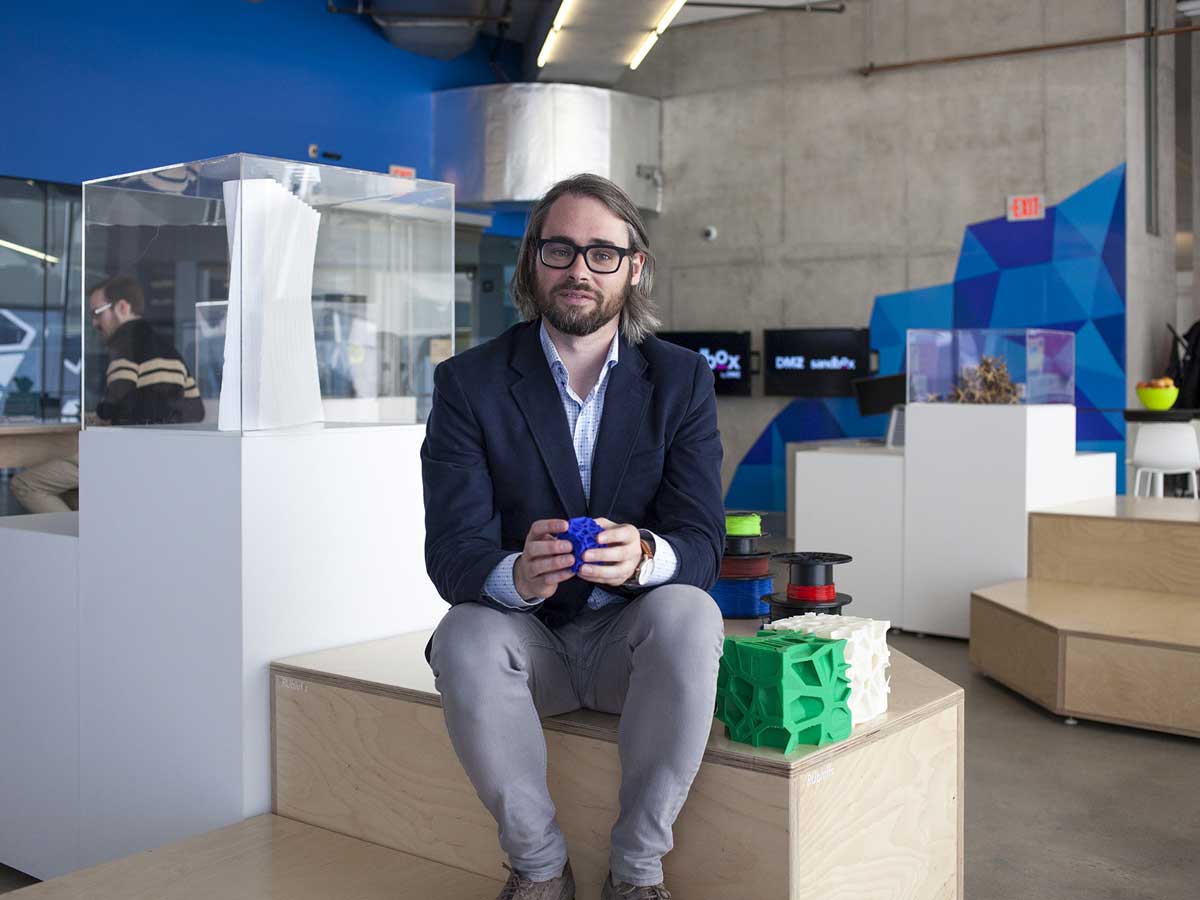He turns poetry into something you can hold

Photo: English instructor and writer Aaron Tucker with a 3D sculpture of his poem in the Student Learning Centre. Photo: Christopher Manson.
If a writer's task is to bring stories to life, Aaron Tucker has found a new way to make that happen: he's using 3D printers to transform literary works into sculptures.
"I'm interested in playing with texture and scale, and the idea of translation. There's something magic about co-developing an algorithm and translating a poem into something you can hold," says Tucker, a lifelong writer and long-time instructor in the Department of English. Earlier this month, he received the Faculty of Arts' Excellence in Teaching First-Year Classes Award. The honour recognizes instructors who have developed innovative strategies for engaging students in the faculty's first-year courses.
As a digital humanities scholar, Tucker is interested in emerging technologies and their effect on traditional humanities disciplines, such as literature and philosophy. To that end, during Congress 2017, he will deliver two presentations on the use of 3D printing in the humanities. His workshop in the Isaac Olowolafe Jr. Digital Media Experience (DME) Lab will examine the logistical aspects of 3D printing while his talk on the theoretical and practical approaches to the technology will explore how 3D printing may contribute to new research in race, gender, class and historical studies.
That's because 3D printing can be used in various ways. Examples include replicating objects that are no longer accessible, turning intangible data, such as human emotions, into tangible, 3D maps and adding tactile elements to humanities documents.
Tucker's own boundary-shattering work has enabled him to collaborate with students and experts from across Ryerson. For instance, during the development of the Chessbard (external link) app, Tucker's first foray into digital translation, he worked with Jody Miller, a software developer and former student in The G. Raymond Chang School of Continuing Education, to turn chess games into poems.
Tucker then moved on to Loss Sets, a poetry-translation project he developed with Namir Ahmed, director of the DME Lab, Tiffany Cheung, Architectural Science ’15, a Ryerson master of architecture student and author Jordan Scott. The university's Geospatial Maps and Data Centre and Centre for Digital Humanities (CDH) also provided support.
First, poems that Tucker co-wrote with Scott on the theme of loss were translated into a set of custom-made rules in 3D modelling software. Then, the algorithm was used to create a series of 3D-printed sculptures. Loss Sets served as a response to multiple losses that occurred last year, from global events such as ISIS’s destruction of millennium-old artwork and the melting of Canadian ice fields to the writers' personal losses, including the death of loved ones.
The project also expressed concern about the possible future applications of 3D printing and the notion that any object can be made, replaced, and ultimately, thrown out. Loss Sets was included in the 2016 Electronic Literature Festival (external link) at the University of Victoria, the You/I exhibit at Winona State University and Making Humanities Matter (University of Minnesota Press), an annual collection of essays.
“It's important for artists to interact with technologies – not only 3D printers – but also computers and smartphones. It makes you think, ‘What could I do with that?’” says Tucker.
Tucker's sculptures will be on display during an open house of the CDH’s newly renovated space on the fourth floor of the Ryerson Library, May 28 from 4 to 7:30 p.m.